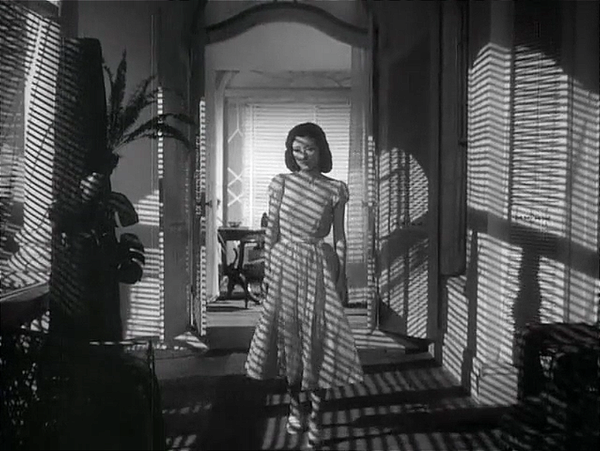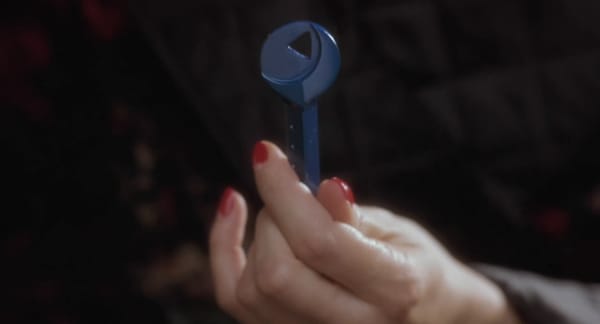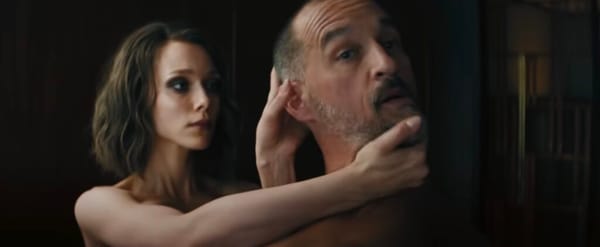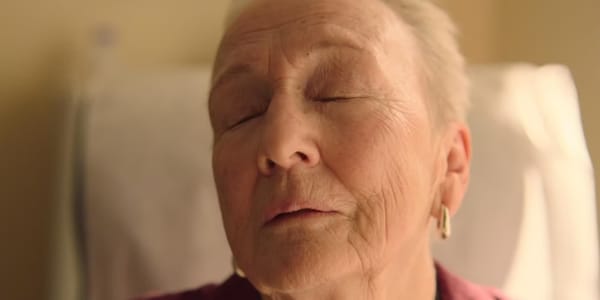What To Watch: "Killers of the Flower Moon"
Martin Scorsese's epic brings a great American crime out of the shadows.


If you had asked me in, oh, 1977 which of the young upstart directors of the so-called “New Hollywood” were going to last – would be regularly putting out worthy work in their old age – my money would not have been on Martin Scorsese. Francis Ford Coppola? Yes, of course – the then-reigning king of art and commerce, blood and box-office. George Lucas and Steven Spielberg, the brash new popcorn kids of “Star Wars” and “Jaws,” absolutely. Brian DePalma seemed poised to run variations on Hitchcock for the next few decades. In 1977, Scorsese had “Mean Streets,” “Alice Doesn’t Live Here Anymore,” “Taxi Driver,” and “New York, New York” under his belt as mature works, the first and third frightening gutter masterpieces, the second a very good film, and the fourth a public bellyflop. His best movies teetered on the edge of self-immolation, and there was Scorsese himself in the back of Travis Bickle’s cab, a black hole of violent fantasies. If you had to pick one filmmaker for either burn-out or flame-out, it was him.
Instead, he’s the last man standing – he and Spielberg, and only Scorsese is held up as the Grand Old Man of cinema, the form’s artistic conscience as the lights slowly come down on the movies as we’ve known them for over a century, which is to say as a mass projection of our dreams and nightmares. He’s a household name – “Marty” – and a chatty, white-haired rebuke to the sold-out commodity that is today’s mainstream moviemaking. The Marvel kiddies deride him as an old man yelling at clouds because he correctly calls out multiplex franchise fare as “theme parks,” and they in turn are mocked for forgetting that movies were once about people – people in all their contradictory, fucked-up glory – rather than pixelated power struggles. Scorsese makes movies now that are bigger than the ones he used to make but just as challenging, difficult – unlikeable, even. And that challenge is what they ask of us. We prefer to see movies about heroes, but Scorsese has always reminded us that the truer stories, the ones that deserve to haunt us and do, are about average American monsters and how close to us they are. The taxi drivers and the goodfellas. Rupert Pupkin and Jordan Belfort. Howard Hughes and the aging hitmen of “The Irishmen.”
As an ongoing descant in his career, Scorsese has also made a trilogy of films about saints riven by doubt – “The Last Temptation of Christ” (1988), “Kundun” (1997), and “Silence” (2016) – and you could argue that his most recent two films fuse those twin strains of his filmography, crime and contrition, into what could be read as a kind of summing up. “The Irishman” (2021) is one of the more misunderstood movies of recent years, a slow-motion morality play about the death of a killer’s soul that should have been experienced in the dark church of a movie theater rather than sampled piecemeal on Netflix (and then abandoned halfway through because the payoff took too long in coming). Movie critics aside, most people I know consider “The Irishman” a “bad movie” – it is anything but – and yet they still revere its maker as the last honest man in the movie business.

This brings us to “Killers of the Flower Moon” (⭐ ⭐ ⭐ ⭐, in theaters now and on Apple TV+ TBA), which is, like “The Irishman,” a story of a man’s moral rot. But it’s also the story of a people’s final flowering of power and pride before being destroyed by men who couldn’t abide seeing them prosper. Scorsese and his collaborators – Rodrigo Prieto on camera, the late Robbie Robertson layering in a last film score, and the invaluable production designer Jack Fisk – create the dusty bygone world of 1920s Oklahoma and the Osage Nation with the fascination and fidelity of the director’s religious films. We are witness to a kingdom, and to the termites gnawing at its timbers.
The film is based on the book by David Grann, which is a recounting of true events: The discovery of oil on Osage land (or, rather, the land they had been resettled on by a US government that thought it was useless), the great wealth that flowed equally to all tribal members, and the murders carried out by local ranchers (and, behind them, national oil interests) with the aim of bringing the “head rights” to the wells under their control. It’s a true American tragedy, the kind of history Ron DeSantis doesn’t want anywhere near a Florida textbook, and with Grann’s book and Scorsese’s film it bubbles back up into the public consciousness, much like the nearby Tulsa Race Massacre of 1921 that the movie’s characters watch in a Fox Movietone newsreel, gasping at its violent erasure before the crime is shoved back under history’s rug.

The story is told through three figures: Ernest Burkhart (Leonardo DiCaprio), a veteran returning from the Great War with his eye out for the main chance; his uncle William “King” Hale (Robert De Niro, above), a cattle rancher whose glad-handing demeanor hides a mind like a calculator; and Mollie Kyle (Lily Gladstone), the Osage woman that Ernest marries for love and for money. Many other characters swirl around them over the course of the three and a half hours of “Killers of the Flower Moon” – including Tom White (Jesse Plemons), an investigating agent from the newly-formed Federal Bureau of Investigations – but this trio is the film’s dramatic fulcrum: The predator, the prey, and the spineless human bastard between them.
Di Caprio plays his role as a character part rather than an anti-hero (or, God forbid, a hero), and he subtly morphs his body and face to chart Ernest’s moral decay. The jaw juts, the posture erodes. The lad’s not very bright, either, and that genial stupidity becomes his cross – do not forget that the director is a lifelong Catholic – as Ernest is torn between venality and his wife, the assumption of a white man’s superiority and the unfamiliar stirring of his heart. It’s an actorly performance, but a very good one, with little vanity to it.
DeNiro has the more expansive role as a local civic leader and “friend to the Injuns” – the kind of avuncular small-time kingpin who gives stemwinder speeches in front of the town’s new ballet school while his crimes are carried out by others in the alleys back of town. De Niro has played a lot of evil men in his time, but Bill Hale is the sort that gets an actor’s juices flowing, a devil moved not by hatred or even envy but only the gnawing knowledge that a colored person possesses something that by rights and by God should be his.

The third apex of the triangle is Gladstone (above center) as Mollie Kyle Burkhart, the performance that carries the film. The actress, who’s of Blackfeet, Nimíipuu, and White American heritage, has been appearing in movies for a decade now – she’s excellent opposite Kristen Stewart in Kelly Reichardt’s “Certain Women” (2016) and a force of nature in “Fancy Dance,” a Sundance premiere that is still rounding the festival circuit and will hopefully see a commercial release next year. She’s a big woman, the opposite of a Hollywood twig, and her calm solidity, Mollie’s certainty in her existence on this earth, anchors “Killers of the Flower Moon” to its time period and to the moral framework the movie needs. It anchors Ernest’s feelings for her, too, and the drama in Di Caprio’s character is the age-old struggle between love and money. No one here has any illusions as to which of those tends to win out.
The movie is full of hard, lived-in faces, both white and indigenous – what a pleasure it is to see Tantoo Cardinal, as Lily’s mother, still gracing the screen decades after “Loyalties” (1986) and “Dances With Wolves” (1990). (Not that she’s ever stopped working.) Familiar faces drop by in smaller roles: John Lithgow as a wily prosector, Brendan Fraser as a barnstorming defense attorney. Still, it’s tempting to think of “Killers” as one of Marty’s gangster films in a Western setting – the period is the Roaring ‘20s and the wealthy Osage drive gleaming Pierce-Arrows, but we’re still very much on the frontier. Bill Hale’s peers are dead-eyed gentry and local rodeo stars, and the minions they hire for their misdeeds are cash-strapped cowhands and fallen natives. No one films murder with as little compunction and less glamour than Scorsese; death in his movies is sudden and businesslike, the work of men who don’t think about it. Ernest’s mistake is that he starts to think about it.

You feel the length of “Killers” in the final hour, but that length feels necessary – a history lesson like this deserves a good, long soak. The recreation of the town of Fairfax, of this land, the people who came from it and the people who took it, is an awe-inspiring feat of cinematic invention: Living ethnography and bitter history. The movie floats by, investing us with horror, then with hope, and then with something like a deep knowledge of how far the complicity spread and continues to spread. Scorsese and his co-writer Eric Roth save the summing up for the end, in a devastating coda that I don’t want to spoil other than to say it jumps ahead by a decade or two to show how great American crimes are made into the stories we tell to entertain ourselves, the better to put them out of our minds after the show is over.
It’s fitting, too, that Scorsese steps in front of the camera once more to allow himself the last word in “Killers of the Flower Moon.” After over a half century of making movies and in his stature as keeper of the flame, he knows the cinema can tell us true stories but more often tells us lies and that it’s up to us to parse the difference. “When the legend becomes fact, print the legend” is a line from a famous movie Martin Scorsese knows all too well, and he knows we use those legends to bury the facts where no one can find them. What he has given us with this film is an exhumation.
Comments? Please don’t hesitate to weigh in.
If this edition of Ty Burr’s Watch List spoke to you, feel free to pass it along to others.
If you’re not a paying subscriber and would like to sign up for additional postings and to join the discussions — or just help underwrite this enterprise, for which the author would be eternally grateful — here’s how.
You can give a paid Watch List gift subscription to your movie-mad friends —
Or refer friends to the Watch List and get credit for new subscribers. When you use the referral link below, or the “Share” button on any post, you'll:
- Get a 1 month comp for 3 referrals
- Get a 3 month comp for 5 referrals
- Get a 6 month comp for 25 referrals. Simply send the link in a text, email, or share it on social media with friends.
There’s a leaderboard where you can track your shares. To learn more, check out Substack’s FAQ.





